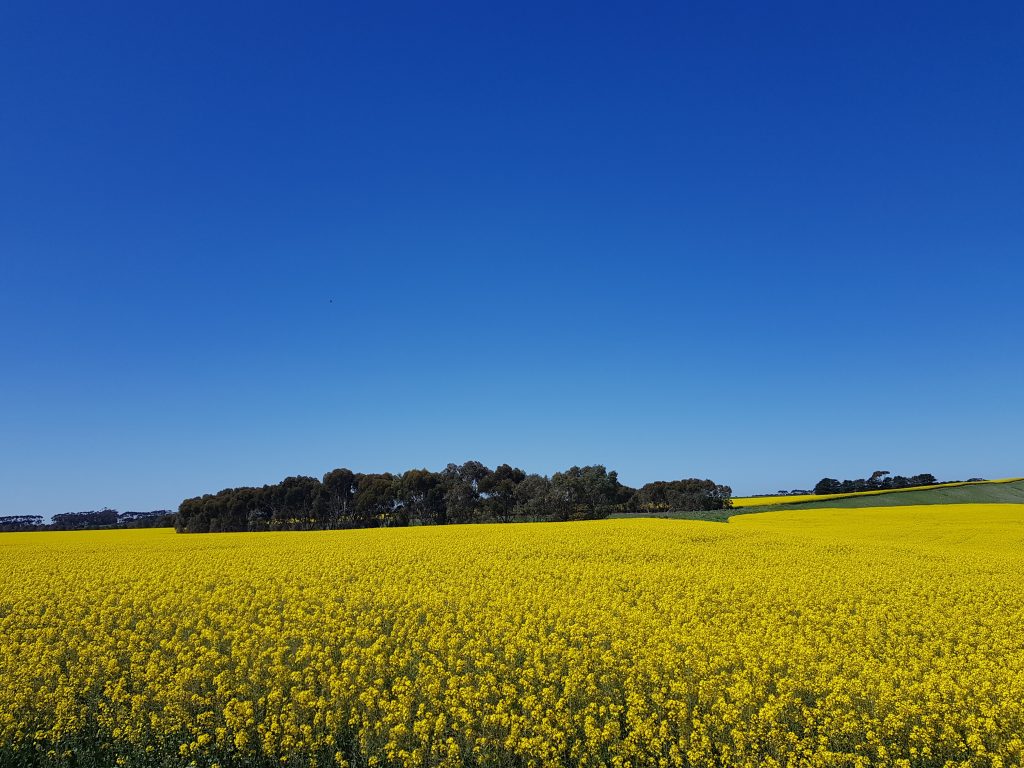Overview
The definition of sustainable agriculture in the context of the Corangamite CMA region is ‘achieving productive agricultural land use and businesses, while protecting the natural resource base from threats related to agricultural land management practices’. This aims to ensure that both public (e.g. improved waterway quality) and private benefits (e.g. improved stock health and fertility) are delivered in line with the statutory obligations under the Catchment and Land Protection Act 1994.
Agriculture is a reasonably high employer and key economic driver in the Corangamite region, with an annual value of almost $1.5 billion. Mixed farming and grazing is the predominant agricultural land use in the Corangamite region (66%), followed by dairy (14%), beef (7%) and sheep (5%) production.
Meat ($660 million) and dairy products ($546 million) are the most valuable commodities in the region, contributing to 14% and 15% of Victoria’s total value respectively. The region produces 16% of Victoria’s hay and silage (tonnes) and 19% of its eggs (dozens). The slight contraction in grazing commodities over time may be driven by diversification and prevailing dry conditions. There has been a marked decline in broad acre cropping in recent years, however this is offset by increases in hay due to changes in seasonal conditions and grain quality.
The barriers to NRM practice change are largely consistent with other regions and findings of previous studies. Cost (39%), the view that ‘I have done everything I can do’ (34%), lack of time (20%) and ‘I am getting too old/planning to retire’ (16%) will continue to be important barriers to address in the Corangamite region.
There is an opportunity to build on the current sustainable agricultural practices in the region, including pasture management, cultivation, crop stubble and/or trash management, soil enhancer use and fertiliser use. Although irrigation is only a minor landuse in the region, there is also an opportunity to ensure current and new irrigation developments use sustainable irrigation practices to reduce the off-site impacts of irrigation including waterlogging, salinity and nutrient discharge.

Assessment of current condition and trends
There are a range of sustainable agricultural practices implemented by farmers in the Corangamite region that can be measured from the ABS Agricultural Census. This includes pasture management, cultivation, crop stubble and/or trash management, soil enhancer use and fertiliser use.
The majority of pasture in the region tends to be a mix of annual and perennial (124,215 ha, 10% of Victoria’s total), rather than solely perennial (90,485 ha) or annual (26,471 ha). Land not cultivated (apart from sowing and planting) makes up 109,974 ha of the 705,488 ha (15%) used for agricultural production or cultivated only once (3%). Stubble retention to maintain ground cover is also practiced widely with 18,564 ha retained on ground and 18,339 ha standing (5% of agricultural land combined). Inter-row sowing and other inter-cropping practices are implemented across 5,617 ha.
Soil enhancers, such as compost and other organic amendments, are applied to approximately 11% of agricultural land (78,771 ha) across the region at a slightly higher application rate than the Victorian average (1.88 t/ha). Approximately 50% of pastures are improved with nitrogen-based fertilisers at slightly lower rates than the state average (0.14 t/ha), which are applied to a further 36% of other agricultural land (251,592 ha) at slightly higher than average rates (0.16 t/ha). Phosphorus-based fertilisers are applied to 44% of agricultural land (308,812 ha) at slightly higher than average rates (0.13 t/ha), although these still represent relatively low input extensive production systems.
Major threats and drivers of change
Climate change is a significant challenge facing Corangamite’s agriculture sector. Average temperatures and the frequency of extremely hot days are increasing, while rainfall is decreasing and changing the pattern of how and when it falls. The sector needs support to prepare for changing conditions while reducing its own environmental footprint.
Potential threats to agricultural land and its productivity include:
- threats to soil health
- pest plants and animals
- soil-borne diseases
- population growth and urban development
- climate change (although this could also have positive impacts)
- unsustainable resource utilisation
- inadequate or poor management
- uncontrolled stock access to remnant vegetation or waterways.
There are also some practices that are not best practice still being implemented to manage crop stubble or trash, such as burning off. This includes 43,374 ha via cool moderate burn and 35,095 ha using a hot burn. Further, 10,394 ha of stubble is wind-rowed and removed meaning ground may be left bare fallow and at risk of erosion through wind and water.



